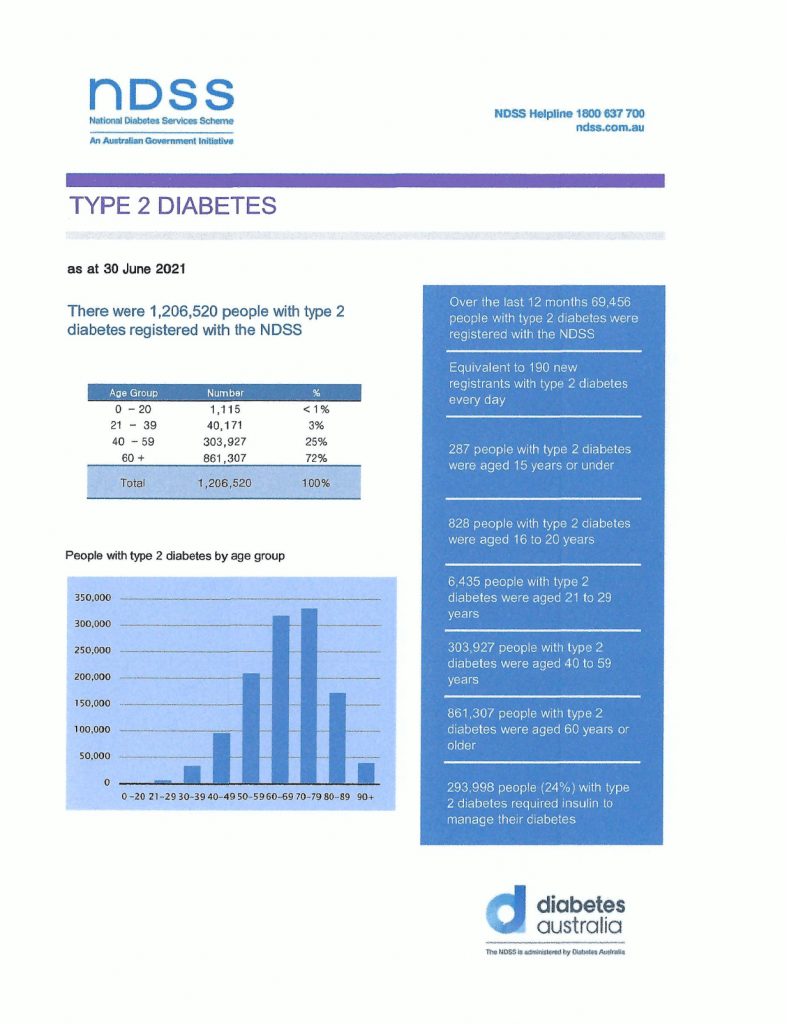Type 2 diabetes, formerly known as adult-onset diabetes, is a form of diabetes characterized by high blood sugar, insulin resistance, and a relative lack of insulin. Common symptoms include increased thirst, frequent urination, and unexplained weight loss.
Long-term complications from high blood sugar include heart disease, strokes, and diabetic retinopathy, which can result in blindness, kidney failure, and poor blood flow in the limbs, which may lead to amputations. Symptoms may also include increased hunger, tiredness, and sores that do not heal. Often, symptoms come on slowly.
The sudden onset of a hyperosmolar hyperglycemic state may occur; however, ketoacidosis is uncommon.
Type 2 diabetes primarily occurs due to obesity and lack of exercise. Some people are more genetically at risk than others.
Type 2 diabetes makes up about 90% of cases of diabetes, with the other 10% due primarily to type 1 diabetes and gestational diabetes.
In Type 1 Diabetes, there is a lower total level of insulin to control blood glucose due to an autoimmune-induced loss of insulin-producing beta cells in the pancreas.
Diagnosis of diabetes is by blood tests such as fasting plasma glucose, oral glucose tolerance test, or glycated hemoglobin.
Type 2 diabetes is largely preventable by maintaining an average weight, exercising regularly, and eating a healthy diet (high in fruits and vegetables and low in sugar and saturated fats).
Treatment involves exercise and dietary changes. If blood sugar levels are not adequately lowered, metformin is typically recommended. Many people may eventually also require insulin injections.
For those on insulin, routinely checking blood sugar levels is advised; however, this may not be needed for those taking pills.
Bariatric surgery often improves diabetes in those who are obese.
For more information on diabetes, please visit NDSS.

[DISPLAY_ULTIMATE_SOCIAL_ICONS]
